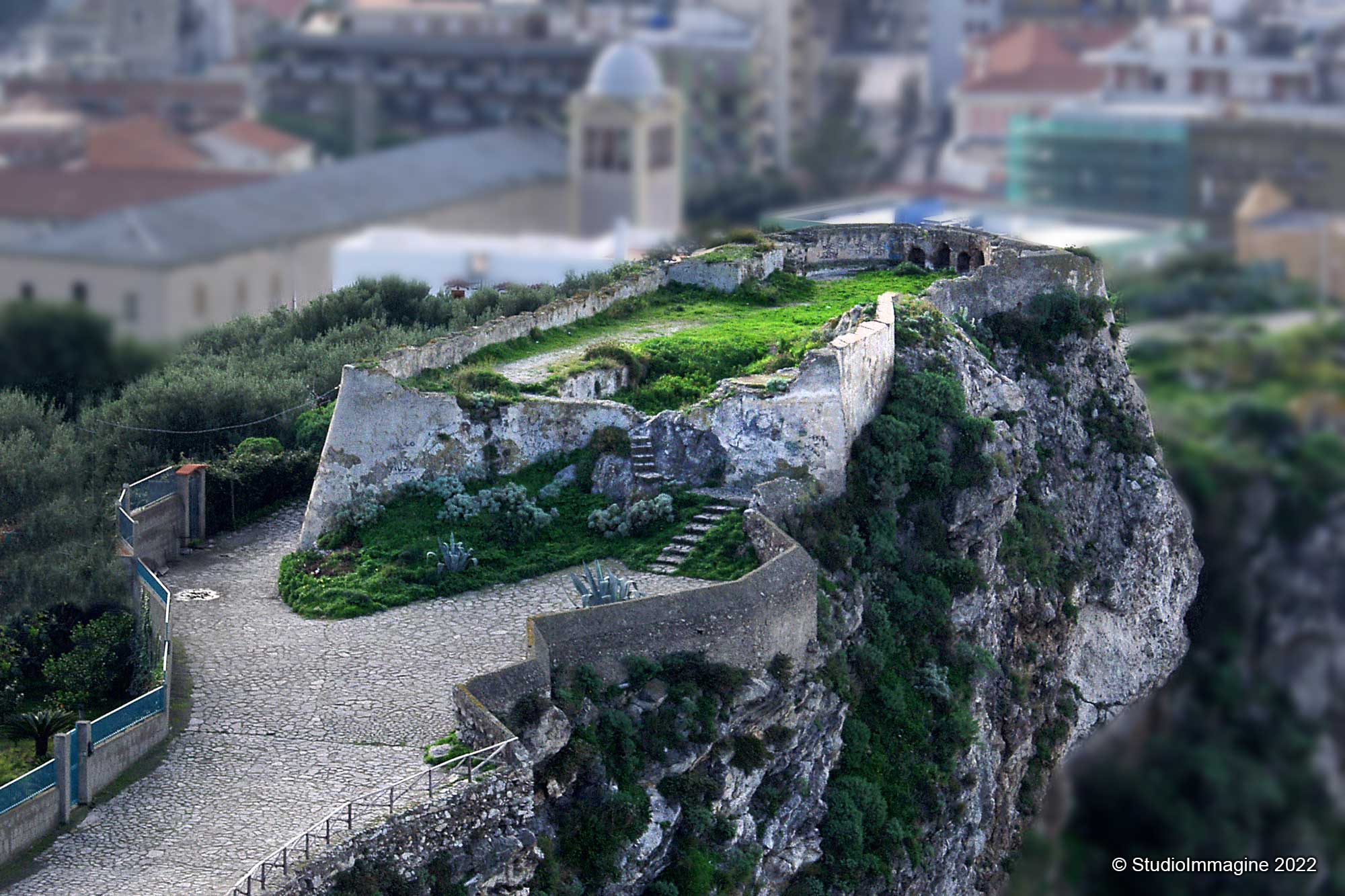It is a military construction located on the upper and westernmost part of the Borgo, close to the rocky ridge, about 63 metres above sea level, along Via dei Castriciani, which leads from Piazza dell'Immacolata to the crossroads of Via Montecastro and Via Duomo. The fort has a semicircular plan on the south side, with walls more than 3 metres thick on the upper part, a square plan on the north-west side, and a wedge-shaped plan on the north-east side, with walls one metre thick. It rises about 6 metres from the rocky base, which is outcropping on the west side. Its plan is therefore the consequence of the geometric connection of the rocky outcrops, i.e. an irregular shape measuring a maximum of 37 metres in length and 12 metres in width.

The fort of Castriciani
Within its perimeter, two rooms below ground level are visible in the north-west part. The first, measuring approximately 2x2 metres, is carved out of the rocks and covered by a stone and mortar damuso slab, with a small window in the rock face facing the sea. The other room, which has no roof because it has probably collapsed, measures 8x6 metres and has a small basin for collecting rainwater and a staircase leading to the fort floor.
There is nothing to prevent us from thinking that other rooms may have been incorporated into the fort structure: a study with stratigraphic research would be desirable to better understand the architecture and the presence of any historical evidence.
Dating is a difficult subject. The fort is already present in the ancient cartography of the 17th century, Piaggia, in his 1853 work, Illustrazione di Milazzo, reports a note taken from a manuscript by Marco Aurelio Catanzaro, who lists it among the fortifications present after the 1718-19 war. Il Ruolo, who, in 1972, was the first to catalogue Milazzo's cultural assets, including the 'fortino dei Castriciani', attributes the construction to the second half of the 16th century. During the Bourbon period, an optical telegraph was housed there.
Certainly, in addition to its value as a historical testimony, its uniqueness as a vantage point remains: the two seas are visible and the view extends from the Aeolian Islands to Cape Rosocolmo. Properly restored and enhanced, it should become a stop on the historical and cultural itinerary within our city.
Fulco C., Picciolo L., Le torri di Milazzo - 2. Il Capo, in Milazzo Nostra
INDIRIZZO
The fort of Castriciani Via Grotta Polifemo 56, Milazzo (ME)







